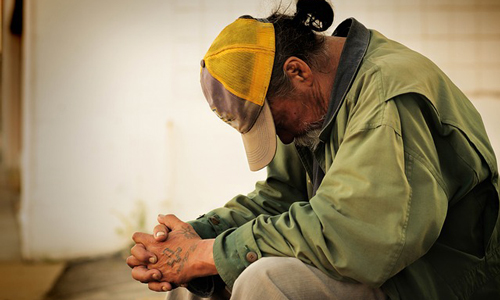Thirty six percent of Americans are financially fragile, according to NEFE. That’s about one in three Americans. For young people especially, financial fragility is a way of life. The average millennial is worth about $8,000 total partially due to student loan debt, rising rent, the cost of living. It’s important for business journalists to not only report about people in poverty, but for them.
Journalists have always written about the conditions of poverty, but historically that coverage has been tailored for wealthier people.
Avoid insensitivity in your reporting
Journalists have been criticized for “parachuting” into sensitive situations, getting what they need and leaving.
When interviewing people in a difficult economic position, it’s important to be respectful. Talk to them like a human being, not a charity case. Low income people are often treated as statistics or stereotyped, but those in a difficult financial situation come in all shapes and sizes and each have their own story to tell. Statistics can help convey trends or provide context, but try to allow those you meet to tell their own stories.
Don’t forget about those on the margins
The extremely wealthy are highlighted in the news all the time. But why not the extremely poor? It’s important to remember that there are people in the U.S. who are living without basic necessities.
In Arizona, there are members of the Navajo nation who are without electricity. In rural Alabama between Selma and Montgomery, residents live with open sewage in their yards, creating diseases otherwise seen exclusively in third world nations.
These are desperate situations, and don’t reflect the majority of the nation–but neither do celebrities or billionaires. If journalists are not covering the entire spectrum of wealth and poverty in this country then we are not painting an accurate picture of the nation we live in.
Educate yourself
If you’re going into journalism––business or otherwise––learning about the critical issues facing the working poor is incredibly important to your coverage of low income communities.
If you’re a journalist from a middle class background or you’ve had little exposure to the conditions of poverty or financial instability, it is important to immerse yourself in these critical issues. There are a number of fantastic resources and articles I’ve complied that are helpful for those going into journalism.
Here is a fact sheet busting common myths about poverty put together by Just Harvest, an anti-hunger, anti-poverty organization










